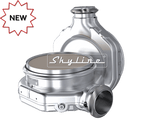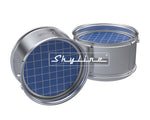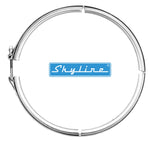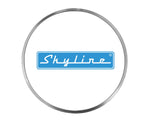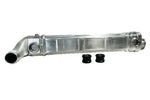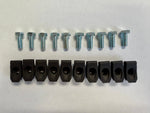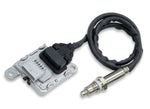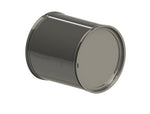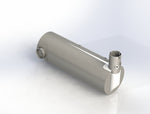Your cart is empty
Looks like you haven't added anything to your cart yet
DPF Cleaning

Professional DPF Filter Cleaning Service for Stark County Ohio and its surrounding areas.
Services

DPF Testing
With our in-house proprietary inspection process to inspect DPF, DOC, SCR & Detroit One Box to pre-quality them for cleaning, our customer would save $$$ from unnecessary cleaning fee paid for "bad" DPF, DOC, SCR & One Box.

DPF Cleaning
With the proven process of baking and blowing, we are not only using the most effective DPF cleaning method in the market, but also able to clean multiple different shapes of filters at the same time to increase our output rate.

DPF Cleaning Record
Every DPF going through our cleaning process will be paired with its pre- and post-cleaning air restriction and weight measurements (this doesn't apply to non-pancake-shaped DPFs), and every DPF gets a DPF Cleaning Record.

DPF Exchange
No time to wait for the DPF cleaning process? We've got you covered! Swap your clogged DPF with one from our stock that has undergone thorough cleaning and testing.
FAQ
What is DPF cleaning?
DPF cleaning is the process of removing accumulated soot, ash, and other particulate matter from a Diesel Particulate Filter (DPF) to restore it to optimal performance. DPFs are designed to capture and store exhaust soot to reduce emissions from diesel engines. However, over time, the filter can become clogged with soot and ash, affecting engine performance, increasing fuel consumption, and potentially leading to costly repairs if not addressed.
Methods of DPF Cleaning
- Passive Regeneration: This occurs when the exhaust temperature reaches high enough levels (typically during highway driving) to burn off the soot automatically. However, it doesn’t remove the ash, which accumulates over time.
- Active Regeneration: When sensors detect that the filter is filling up, the engine’s ECU (Engine Control Unit) injects extra fuel into the exhaust to increase the temperature and burn off the accumulated soot.
- Forced Regeneration: This method uses diagnostic tools to initiate the cleaning cycle by raising exhaust temperature to clear out the soot. It’s typically done in a repair shop.
- Off-vehicle DPF Cleaning: The filter is removed from the vehicle and cleaned using specialized machines that blow compressed air, heated fluids, or ultrasonic waves to remove soot and ash.
Regular DPF cleaning can extend the life of the filter and help maintain vehicle performance, as well as avoid costly repairs or replacement.
How to remove DPF filter for cleaning?
Removing a Diesel Particulate Filter (DPF) for cleaning involves several steps. This can vary slightly depending on the vehicle make and model, but here’s a general guide to the process. Be sure to check your vehicle’s service manual for specific instructions, as some models may require special tools or procedures.
1. Gather Tools and Equipment
- Socket wrench set
- Ratchet and extension
- Penetrating oil or lubricant spray
- Safety glasses and gloves
- Floor jack and jack stands (if necessary)
- DPF removal tool (if required for your vehicle model)
- New gaskets or seals, if needed for reinstallation
2. Prepare the Vehicle
- Park on a Level Surface: Ensure the vehicle is parked on a flat surface with the parking brake on.
- Allow the Engine to Cool: Since the DPF gets very hot during operation, let the vehicle cool completely to avoid burns.
3. Access the DPF
- Raise the Vehicle (if needed): If the DPF is located under the vehicle, use a floor jack and jack stands to lift the car and access the exhaust system.
- Locate the DPF: The DPF is generally located in the exhaust system between the engine and the muffler.
4. Remove Bolts and Clamps
- Apply Penetrating Oil: Spray penetrating oil on the bolts and clamps around the DPF to loosen any rust or corrosion, which will make removal easier.
- Disconnect Sensors: DPFs often have temperature and pressure sensors attached. Carefully disconnect these to avoid damaging them.
- Remove Mounting Bolts and Clamps: Use the socket wrench to remove any bolts or clamps securing the DPF in place. Keep track of these parts for reinstallation.
5. Remove the DPF
- Carefully Lower the DPF: Some DPFs are heavy and may require a second person or a support stand. Carefully remove it from the exhaust assembly, ensuring you don’t damage nearby components or wiring.
6. Inspect and Clean the DPF
- Take the DPF to a Cleaning Service: Many shops use specialized equipment to clean DPFs thoroughly. These services may include compressed air, thermal cleaning, or ultrasonic cleaning, which is more effective than basic cleaning methods.
7. Reinstall the DPF
- Replace Gaskets or Seals: If your vehicle has gaskets around the DPF, replace them before reinstalling.
- Reconnect and Secure: Reattach the DPF using the mounting bolts and clamps, reconnect any sensors, and ensure everything is tightened securely.
- Lower the Vehicle: If you raised the vehicle, lower it carefully.
8. Reset System Codes (if necessary)
- Use a Diagnostic Tool: Some vehicles may require a DPF reset using an OBD-II diagnostic tool, especially if the DPF warning light was triggered.
After reinstalling, start the vehicle and check for any error codes. If you’re unsure about any step, a professional mechanic can perform the DPF removal and cleaning.
We have made detailed step by step guide for Freightliner Cascadia and Cummins X15 DPF removal and installation on our How-To Video page.
➡️How to remove Freightliner One Box And DPFs - A Step-by-step Guide
➡️How to Install Freightliner One Box and DPF filter - A Step-By-Step Guide
➡️How to Remove Cummins X15 DPF and DOC (Kenworth, Peterbilt, Freightliner, Volvo) - Step by Step
➡️How to Install Diesel Particulate Filter (DPF) and Diesel Oxidation Catalyst (DOC) for Cummins X15
How to Clean a DPF Filter at Home?
Cleaning DPF filter at home isn't recommended. However, some people attempt to use pressurized warm/hot water to clean the inlet side of the DPF filter. Even though the soot on the inlet side of the DPF surface can be cleaned up, the ash and soot trapped inside the DPF filter vessels will not be broken down. We did a air restriction test after the cleaning with this "home cleaning" method, and the air restriction barely changed. In conclusion, save the headache, and seek a professional DPF filter cleaning facility near you to get the DPF filter tested and cleaned professionally.
Here is a video to show you
Why Pressure Washing Your DPF is a Costly Mistake: A Technician's Insight
How Often Should You Clean Your DPF Filter?
The frequency of DPF cleaning depends on your driving habits. Long highway drives reduce the need for frequent cleanings, but city driving with frequent stops and starts can lead to quicker clogging. On average, it's recommended to do a parked regeneration every 1-2 weeks, and do a DPF filter cleaning every 100,000 to 150,000 miles.
It is always recommended to clean your DOC along with your DPF filter when you get a professional DPF filter cleaning service.
How to know if my DPF needs cleaning?
There are several signs to watch for that indicate your Diesel Particulate Filter (DPF) may need cleaning:
1. Dashboard Warning Light
- Most vehicles have a DPF warning light on the dashboard. When this light comes on, it typically means that the filter is becoming clogged and requires regeneration or cleaning.
2. Reduced Engine Performance
- A clogged DPF can restrict exhaust flow, which affects engine performance. You may notice a lack of power, slower acceleration, or increased fuel consumption.
3. Poor Fuel Efficiency
- When the DPF is full of soot or ash, the engine works harder, resulting in higher fuel consumption.
4. Frequent Regeneration Cycles
- If you notice your vehicle is frequently going into regeneration mode (where it tries to burn off soot automatically), it could mean the DPF is becoming clogged faster than it can clean itself.
5. Excessive Exhaust Smoke
- In some cases, a full DPF may result in dark exhaust smoke, as the exhaust flow becomes restricted, and unburned fuel is released from the exhaust system.
6. Increased Exhaust Temperatures
- Clogged DPFs can cause excessive exhaust temperatures, as the engine tries to burn off the accumulated soot. This might lead to further damage if not addressed.
7. Unusual Smells
- You may notice a strong, acrid smell from the exhaust, especially during regeneration attempts. This odor is often caused by the filter trying to burn off excess soot unsuccessfully.
If you notice any of these signs, it’s a good idea to have your DPF checked and cleaned as soon as possible to avoid more serious (and costly) issues.
How is DPF cleaned?
At Diesel Emissions Specialists, we are equipped with industry-proven thermal DPF cleaning equipment. Here are the DPF cleaning process:
PRO-CLEAN
Inspect & Benchmark
- Visual inspection – check for damage & evidence of upstream issues.
- Wire/Pin test for plugged cells.
- Measure the airflow of the filter.
- Measure the filter weight.
- Check for cracks in the brick using the built-in light.
Document & Record
Record the pre-clean inspect & benchmark results into DPF Cleaning Record software.
Blow (De-Ash)
Remove as much loose material as possible from the filter before baking.
CLEAN
Bake
- Load the filters into the oven.
- Set the filter cycle based on the filters being cleaned.
- Using the redesigned new touchscreen user interface.
- The baking cycle usually runs overnight.
Cool
- Carefully remove the hot filters from the oven.
- Place the filters on the Cool-Down Cart.
- Accelerated the cooling process safely.
Blow
- Uses high-velocity, heated air.
- Most filters dry in 20 minutes.
- An adapter kit is available for many odd and irregularly shaped filters.
- Exclusive to the Aqueous package.
POST-CLEAN
Inspect & Benchmark
- Wire/Pin test for plugged cells if needed.
- Measure & compare the airflow of the cleaned filter to determine effectiveness.
- Measure & compare the cleaned filter weight to see how much soot was removed.
Document & Record
Record post-clean inspect & benchmark results into DPF Cleaning Record software.
How long does DPF cleaning take?
The Thermal cleaning process usually is about a day. The baking cycle is often completed overnight and then it takes a few hours for the filters to cool down.
How much does DPF cleaning cost?
At Diesel Emissions Specialists, we charge $350 per DPF filter cleaning, $500 per DPF & DOC combo cleaning, $350 per SCR cleaning, $1,200 per Freightliner One Box cleaning (including the 2 DPF filters).
For fleet customers, please contact us for volume pricing.
For customers that needs our shop labor for DPF filter removal and installation, please contact us to get an estimate.
- Choosing a selection results in a full page refresh.

